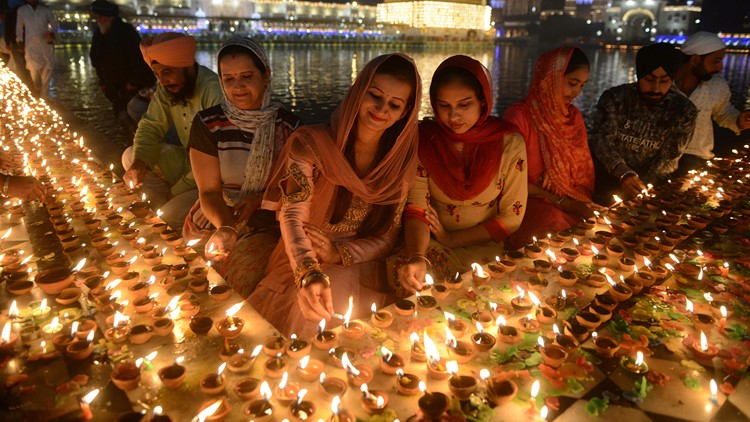What is Diwali?
Diwali, or Deepavali, a Sanskrit word meaning “rows of lighted lamps,” is a Hindu-originated festival celebrated in India and by the Indian diaspora. During the five-day celebration — also known as the “festival of lights” — clay lamps known as diyas are lit to signify the victory of good over evil, according to the Hindu American Foundation.
Over time, Diwali has become a national festival marked by most Indians regardless of faith, with Jains, Buddhists, and Sikhs also celebrating. Diwali also celebrates the goddess of wealth and prosperity, Lakshmi. Some believe it falls on her birthday and the day she married Lord Vishnu, another Hindu god.
Hindus interpret the Diwali story based on where they live, according to National Geographic. In northern India, they mark the story of King Rama's return to Ayodhya after he defeated Ravana by lighting rows of clay lamps. In southern India, people celebrate it as the day Lord Krishna defeated the demon Narakasura. In western India, the festival marks the day Lord Vishnu, one of the main gods of the Hindu trinity, sent the demon King Bali to rule the nether world.
Meanwhile, in Jainism it marks the nirvana or spiritual awakening of Lord Mahavira, National Geographic reported. And for Sikhs, it celebrates the day a major guru was freed from imprisonment.


When is it this year?
Diwali falls between October and November, but the exact dates change each year based on the Hindu lunar calendar, according to England’s Independent newspaper. It lasts five days, with the major celebrations occurring on the third day, which this year falls on Nov. 7.
What happens during Diwali?
In India and other places where the holiday is celebrated, residents leave their windows and doors open to allow Lakshmi to find her way into their homes, the Independent reported. Every home is lit with diyas, leaving no room for darkness to enter, and doorsteps are decorated to welcome guests, according to the Hindu American Foundation. In addition, many people wear new clothing to thank Lakshmi for providing prosperity and good fortune. And, as evening comes, firecrackers are set off.
Isn’t there some eating involved?
Of course. Throughout the festival, traditional sweets and savory items are eaten as well as full meals, particularly on the third and fifth days, according to the American Hindu Foundation. Among the sweets are diya-shaped sugar cookies decorated with icing and savories include mini-samosas and puris.



